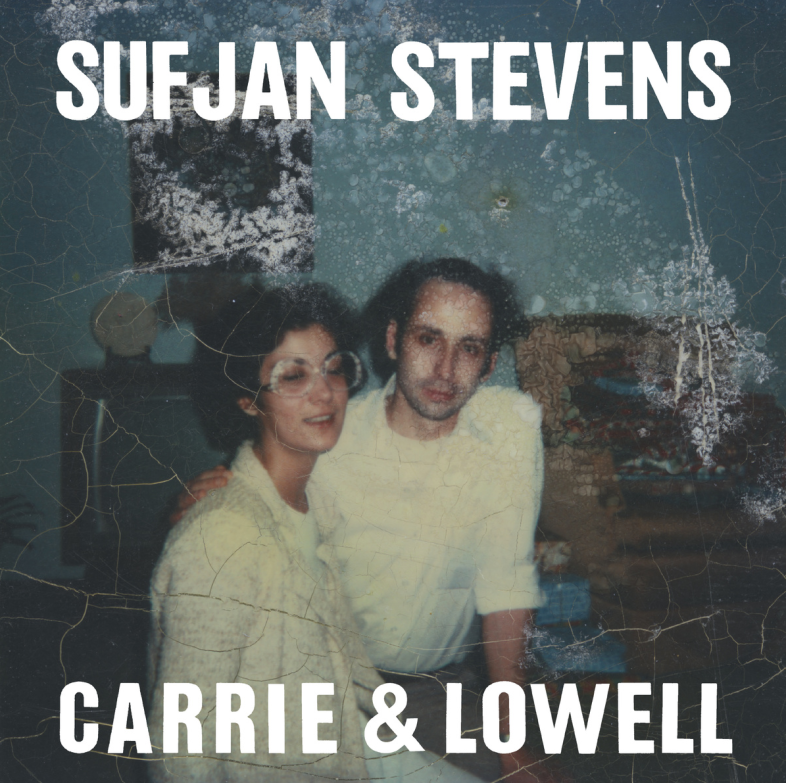Carrie And Lowell And Everyone We Know: On Sufjan Stevens’ Nostalgic New Album
Stevens is on the verge of releasing Carrie and Lowell, an acoustic project that many are comparing to the artist’s early-career works.
By ![]() Kev Nemelka
Kev Nemelka


Sufjan Stevens is one of few proto-indie artists that have remained relevant through the shifting musical climates of the past decade. This may largely be due to the fact that, unlike many musicians, he has the luxury of possessing a rather malleable musical identity, i.e. it’s difficult to discount the release of a maximalist synth project and a hiphop collab and a second five-disc Christmas album and a couple neo-folk records all within the span of just five years because they all come across as the actual Sufjan Stevens. Along these lines, his unswerving success could also be due to the fact that both critics and fans hold him at the zenith of contemporary, progressive pop composition, thus he can in a sense do no wrong. I’m convinced, however, that more so than these two very plausible hypotheses, the core of Stevens’ relevance most likely has more to do with the oracular science of impeccable timing.
Stevens is on the verge of releasing Carrie and Lowell, an acoustic project that many are comparing to the artist’s early-career works. It’s surprising to think that his first proper LP after the mind-expanding digital pyrotechnics that were Age of Adz is but a grown-up emo record reminiscent of an older, played out sound. So what is significant about a new album that has (metaphorically) already been made? For starters, it’s worth examining the cultural context within which his contemporary target audience resides.
Today’s generation of young(ish) adults who came of age after or around the time of 9/11—this aforementioned target audience—is possibly one of the most prematurely nostalgic generations of recent history. Nostalgia has become such an integral part of contemporary culture on both a superficial and subliminal level. The resurgence of past cultural signifiers within music, fashion, and film, e.g. the major success of Richard Linklater’s Boyhood; the ubiquitous influence of Instagram and other archiving social media platforms; the overwhelming increase of organic, natural, and green rhetoric that looks back to a time before GMOs and greenhouse gases; all of these things are nostalgia at its most omnipresently charismatic. Svetlana Boym, artist, professor, and nostalgia expert at Harvard, explains in her book The Future of Nostalgia that it can be “a romance with one’s own fantasy,” “a longing for a home that no longer exists or has never existed,” and a “sentiment of loss and displacement.” In this context of home and place, Carrie and Lowell is, for a twentysomething like myself, immediately reminiscent of the early 2000s, not only because that was the time that Stevens’ oeuvre was first being legitimized by critics and an entire generation of young music lovers, but more importantly, it was always the time to which I turned when, with that youthful, romantic fervor that has since faded, I would recount memories of my hometown proper. It was (is) my go-to sector of memory when I’m feeling nostalgic. Encompassed within the misty walls of my memory of that time are all the things Boym mentions: a romanticization of my younger years and the catch-22 of illumination (that growing old makes us wise in exchange for the light of true youth); a home that no longer exists, or, more accurately, has been idealized so deeply that it has become merely an illusion; feelings of displacement that lead each of us—as I assume I’m not alone in any of this—to feel like walking simulacra in our new environs. All of Boyms’ ideas are my nostalgic reality, and they are also manifested in Carrie and Lowell, which is why I think its release is so timely. Stevens’ subscribers are nostalgic for both the very time to which his new album aesthetically looks back, as well as our individual eras of childhood (further implied by the title and aged cover art for the album).
From a capitalist standpoint, because nostalgia has become such a major determinant in contemporary culture, Stevens’ release of Carrie and Lowell seems like a brilliant business play. His faithful fans, now presumably part of the nine-to-five workforce or postsecondary academia, want reminders of their more carefree years, mementos of a calmer, gentler world before corporate jobs and dissertations and dubstep. “Some thought that the modern metropolis would provide enough excitement and stimuli to quell people’s longings for the rustic life,” writes Boym. “Yet this did not come to pass. Instead, nostalgia accompanied each new stage of modernization, taking on different genres and forms, playing tricks with the timetables.” In other words, what we learn from nostalgia’s cultural ever-presence is that breaking the time-space continuum is precisely what the consumer wants.
Although much of this longing for the past is nothing more than sentiment and irony and what is vogue, perhaps there’s a nostalgic undercurrent that is more telling of our generation’s insecurities, that perhaps beneath our desire for fashions and sounds of the past, what we truly long for is the feeling of safety—physical and financial—that we experienced under the stewardship of our parents and caretakers.
The 2008 economic collapse created a “new” kind of fear we had only read about in textbooks; the reality of debt, entitlement, and financial oblivion came to the forefront of real national issues. It was certainly an overwhelming reality-check for millions of Americans of all ages, but I think there’s something about being the first generation to enter full adulthood after the recession that makes nostalgia even more of a reality for contemporary twenty-to thirtysomethings, an uncertainty of the future that makes us—I’m speaking of the particular socio-economic (middle) class to which I belong—all subconsciously nostalgic for the days of no responsibility or worry, not out of laziness but in homage to the long gone feelings of being cared for. It’s not necessarily the unbecoming attitude of culture sans history or sentiment for sentiment’s sake for which nostalgia is frequently disregarded, but rather a nostalgia for feeling safe or an understanding that things can never be the same. In one of my favorite tracks from the album, Stevens confesses, “I should have known better | nothing can be changed | the past is still the past | the bridge to nowhere,” simultaneously acknowledging the worthlessness of superfluous nostalgia and the inability to control this desire to make the past present. So I don’t think that the nostalgia of Carrie and Lowell was a money-play so much as a “lucky,” perhaps even Jungian sort of connection to a particular generation’s collective nostalgia. Still, as I mentioned, the timing is impeccable.
Perhaps as an appendage to this notion of nostalgia, Carrie and Lowell’s foundational incorporation of self-reflexivity is another testament to its germane release. Consider the album through the hyper-contemporary lens of normcore philosophy. Normcore encourages a somewhat self-referential youth-mode mentality that, as the official manifesto explains, “isn’t about perpetually reliving yourself at a younger age, [but rather] being youthfully present at any given age.” Carrie and Lowell fits this condition like a glove, contemporizing the throwback “folkness” of the decade prior into a youth-mode oment in the present. In other words, the mere occurrence of nostalgia (youth) within the album reinforces the fact that it is undeniable a contemporary (present) one.
To be contemporary-minded is to be nostalgic, and for our generation that means specifically for our past selves. Stevens seems to understand this, and I predict that this will be a major contributor to the success of this upcoming album. It’s happy-sad, it’s socially conscious, it’s pop-nihilist, it’s refreshingly minimalist, but most importantly, it’s prophetically timed, hence Carrie and Lowell arrives like a spring zephyr, and nostalgia never felt so crisp. ![]()
Works cited:
Svetlana Boym, The Future of Nostalgia, New York: Basic Books, 2001.
K-Hole and Box 1824, “Youth Mode: A Report on Freedom,” khole.net, 2013.




